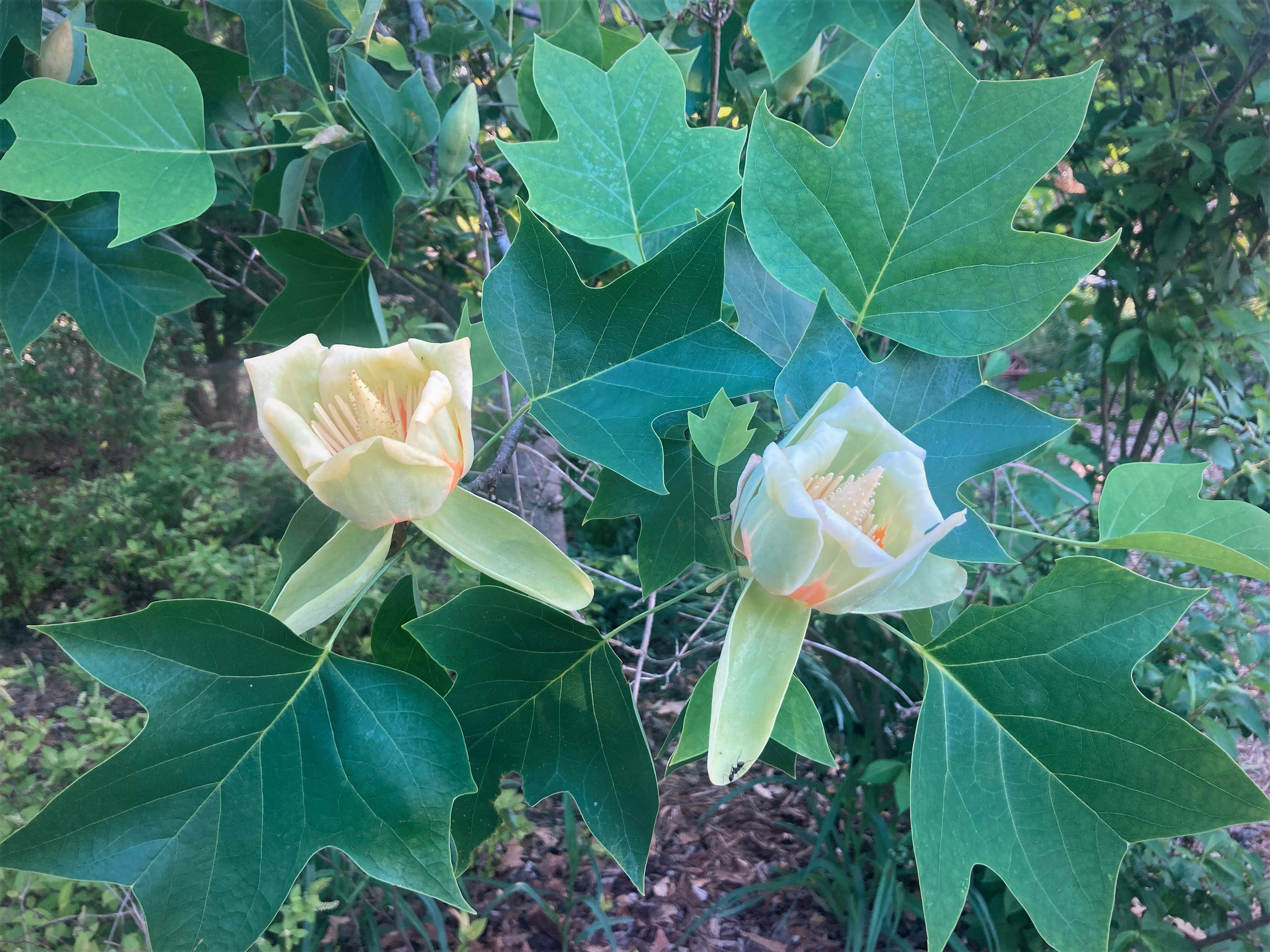Tuliptree
Contact
University of Arkansas System Division of Agriculture
Cooperative Extension Service
2301 S. University Ave.
Little Rock, AR 72204

Tuliptree
With the return of warmer weather, I take my morning coffee most days under the spreading limbs of a tuliptree. This tree is the largest hardwood in North America and has the potential of someday over-topping the elms, oaks and maples that are scattered about my yard. It is native everywhere east of the Mississippi River from north Florida to the Great Lakes and into milder parts of New England but is found in Arkansas only along Crowley’s Ridge.
Known to the scientific community as Liriodendron tulipifera, which translates from Latin as a “tulip-bearing lily tree.” Donald Peattie, in his A Natural History of Trees, says of the yellow and orange blossoms, “when it flowers, erect on every bough, hold the sunshine in their cups, setting the whole giant tree alight.”
Many other common names are used for this tree, however, including yellow poplar, tulip poplar, whitewood, canoewood and fiddle wood. Canoewood, for example, harkens back to the days when the long, large, unbranched trees were felled near a river, their interior hollowed out by a carefully managed fire, turning the trunk into a tough, but relatively light canoe. In 1799 Daniel Boone is said to have loaded his family into a 60-foot-long tuliptree canoe and sailed off down the Ohio River, eventually taking up residence in Spanish territory.
Tuliptrees are big. In sheltered, moist coves of the southern Appalachian Mountains, trees more than 170 feet tall with a trunk diameter to six feet are seen. Oftentimes, even today, it will be sixty feet or more to the first branch. Even though the wood is light in weight and not suitable for beams or post construction, it was relentlessly sought by lumbermen after the Civil Way until only smaller trees remained. Like our other cutover forests, they have recovered but only scattered stands of virginal giants remain in the wild.
Not surprisingly, tuliptrees were one of the first trees shipped back to Europe, arriving there by 1688. In a sense, this was a homecoming for fossils of Liriodendron are found throughout the continent. The global cooling and subsequent glaciation that began about five million years ago erased them from Europe, leaving two widely isolated populations still alive; one in eastern North America and one in southeast Asia (China and Vietnam). So distantly isolated from their kin, scientists now recognize two distinct species of Liriodendron.
This widespread disjunction of species including one species in eastern North America and one in Asia has been recognized since the 1850s. About 60 sets of species are recognized with plants such as sassafras, Nyssa, Kentucky coffee tree, persimmon, and Pachysandra being examples. When this unique geographic distribution pattern was first identified – long before anyone dreamed up the idea of continental drift and plate tectonics – all sorts of fanciful sunken land bridges were proposed as explanations.
Today we know that a widespread temperate forest must have ranged across the supercontinent of Pangea. As this giant landmass began rafting apart some 250 million years ago, plant and animal populations began drifting apart. This is hard to conceptualize, but this might help. Geologists think the Atlantic Ocean is about 150 million years old, spreading from the north-south trending mid-Atlantic rift. The North American plate is moving west at about one inch per year. In 150 million years, the continent would have moved about 2300 miles westward. Continental drift is slow, but given enough time to do its job, stuff gets moved about.
This brings up another characteristic of the tuliptree. It is a member of the Magnoliids clade, a group of plants considered the ancestral forms of modern dicots. While the oldest Liriodendron fossils are only about 75 million years old, their cousins the magnolias, must have originated sometime before the supercontinent began breaking up. These ancient plants – things such as magnolias, pawpaw, spicebush, Pachysandra, and several tropical species – have primitive flower parts that form a kind of “missing link,” partially bridging the gap between the ancient conifers and modern plants of our contemporary world.
